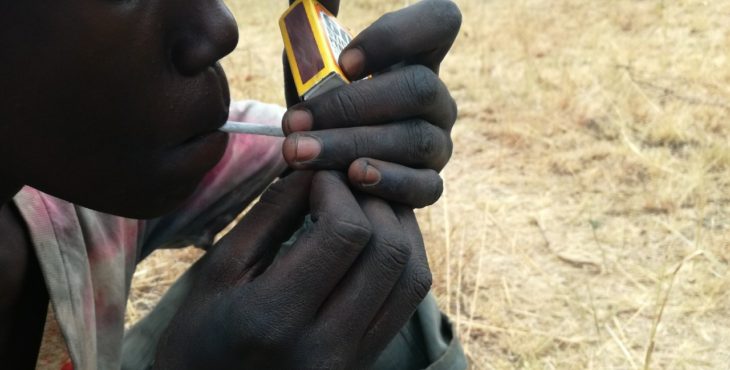NAIROBI, Kenya, Jun 26- The COVID-19 pandemic has slowed down the efforts to curb drug and substances abuse in the country, as peddlers explore new ways to bend the law, including use of social media platforms.
Some users have retreated back to their homes, where they have been using drugs openly in the presence of their children according to authorities.
It is a new trend that has left the National Authority for the Campaign Against Alcohol and Drug Abuse (NACADA) devising ways, including seeking refuge to science, in a bid to reverse its effects and save lives.
NACADA board chairperson Prof. Mabel Imbuga on Saturday said they are also aware that some people have been consuming alcohol even past curfew hours, in some bars, in total disregard of COVID-19 protocols.
“To address these COVID related challenges, the Authority is working with all key players including the Ministry of Interior and Coordination of National Government and other Security and law enforcement agencies to address related offenses,” she made the remarks when the Authority held an event to mark the International Day Against Drug Abuse and Illicit Trafficking.
This year’s theme is ‘Share Facts on Drugs, Save Lives’– which highlights the need for evidence-based approaches to equip the public with tools to inform choices and effective services.
According to the World Drug report, an estimated 275 million people used drugs and over 36 million others suffer from drugs use disorders.
What measures has NACADA adopted to curb the menace in Kenya?
“In reducing the demand for drugs, we have achieved much through the Positive Parenting Programme. This is a programme that targets parents and empowers them with knowledge on drugs and how to help an affected family member. The Life Skills Programme which has been piloted in over 84 primary schools has empowered young pupils with knowledge on alcohol and drugs and also elicited good debate on drug use amongst pupils and teachers,” the NACADA board chairperson said.
NACADA has assisted ten counties in establishing county-based treatment and rehabilitation centres. They are Bomet, Kisii, Kwale, Mombasa, Nyeri, Kisumu, Kakamega, Taita Taveta, Nakuru and Lamu.
Prof. Imbuga said that this, “has been critical in enhancing uptake of treatment services at the local level. Additionally, the regular training of Addiction Professionals including their certification has ensured that the country has a pool of resource persons to provide evidence-based interventions to persons with substance use disorders.”
-About the new standards to fight the menace-
NACADA Chief Executive Officer Victor Okioma said already the authority was adopting a set of new standards that will see the introduction and implementation of a scientific approach research in the war against the menace.
The new standards will have specific thematic areas on the new approaches of fighting drug and substances abuse in Kenya.
“The development of this document is timely to guide implementation of prevention programs within families, schools, workplaces, media and our communities,” the CEO said.
“One of the greatest milestones that we have achieved during this unprecedented time is the development of the National Standards on Alcohol and Drug Use Prevention. The Standards aim to improve delivery of programs, interventions and policies in Kenya to produce positive outcomes for the targeted populations. It accentuates our commitment to Evidence-Based Interventions (EBIs) combating alcohol and drug abuse challenges in Kenya.”
According to a recent NACADA survey, the most commonly abused drugs and substances in Kenya are alcohol, tobacco, cannabis (bhang), glue, miraa (Khat) among other psychotropic substances.
The Rapid Situation Assessment of Drug and Substance Abuse in Kenya (NACADA, 2017) indicates that 12.2 percent of people aged between 15 and 65 are active users of alcohol, with 10.4 percent of them suffering from alcohol use disorders.
The survey also indicates that other substances of abuse included; tobacco (8.3pc); miraa (4.1pc) and cannabis at 1.0pc.
In addition, findings of a National Survey on the Status of Drugs and Substance Abuse among Primary School Pupils in Kenya (NACADA, 2019) showed the average age of onset of at least one drug or substance of abuse was 11 years; and lowest age of onset of at least one drug of abuse was 4 years.
Further, a National Survey on Alcohol and Drug Abuse among secondary school students in Kenya (NACADA, 2016) showed secondary schools are not drug free environments.
Among this age group, alcohol had highest prevalence at 3.8pc, prescription drugs recording 3.6pc, miraa 2.6pc, tobacco 2.5pc, cannabis 1.8pc and heroin and cocaine having the lowest prevalence at 0.2pc.
“Although tremendous efforts are in place to mitigate the growing problem, through awareness and sensitizations, drug education, counselling and rehabilitation, with less attention to evidence-based programs that are cost effective and with large effect size,” reads the new standards launched on Saturday.
“The World Bank has pointed out that several low-cost interventions can have large-scale effects not only on population health but also on productivity especially in countries with low resources such as Kenya.”
Among other things, the new standards focus on prevention standards and guiding principles which include school, family and community programmes.
At the community level, the prevention programs will include civic, religious, law enforcement and other government organizations, in a bid to enhance anti-drug use norms and pro-social behaviours.
“Many programs coordinate prevention efforts across settings to communicate consistent messages through school, work, religious institutions, and the media. Community-based programs also typically include development of policies or enforcement of regulations, mass media efforts, and community-wide awareness programs,” reads the new standards.
Want to send us a story? Contact Shahidi News Tel: +254115512797 (Mobile & WhatsApp)


